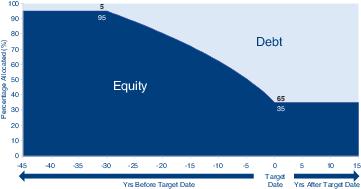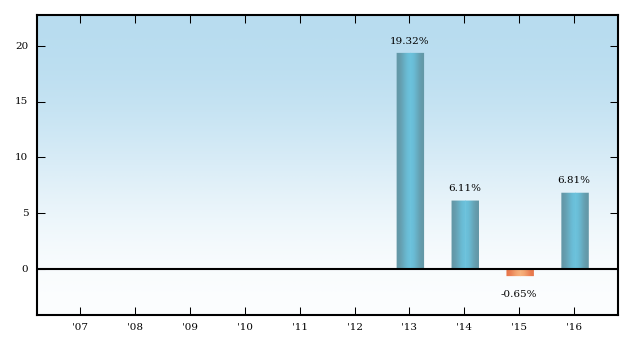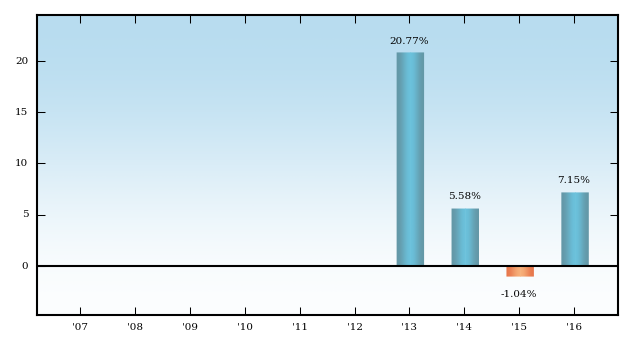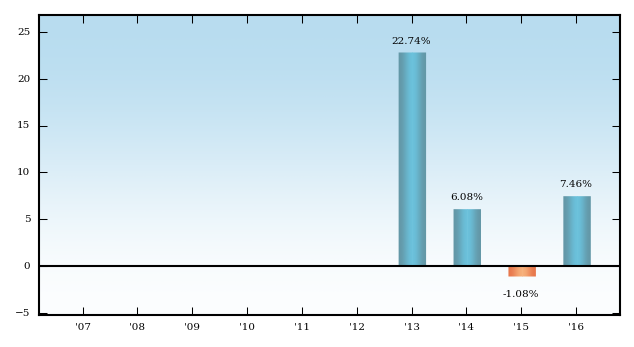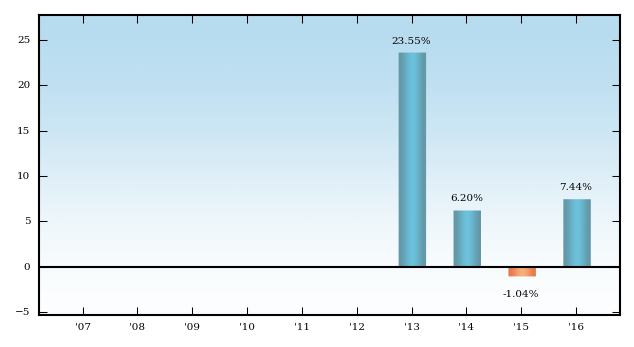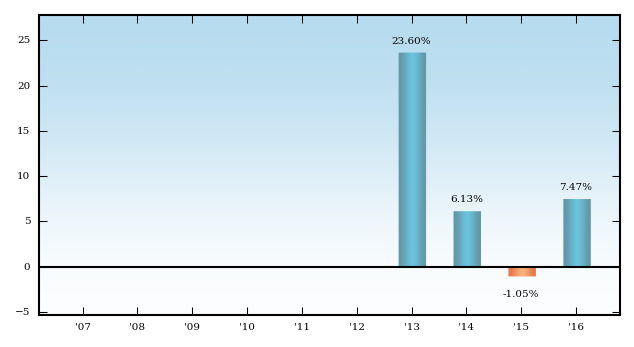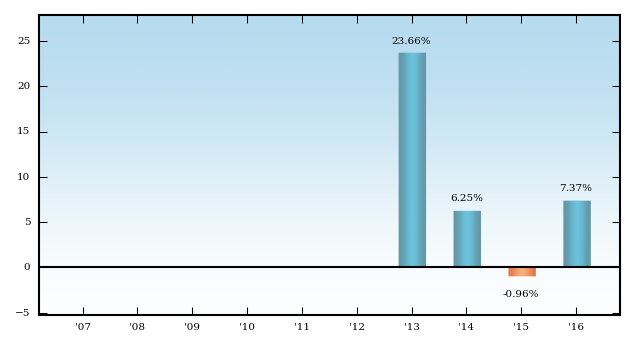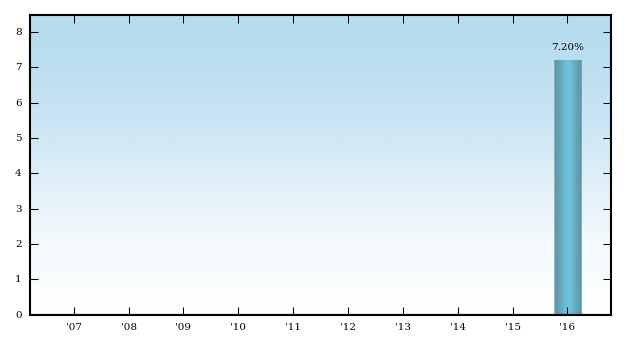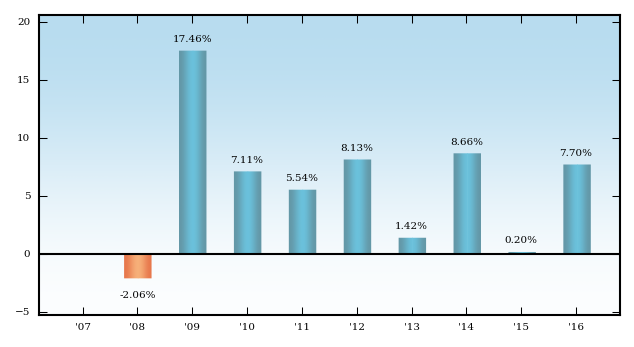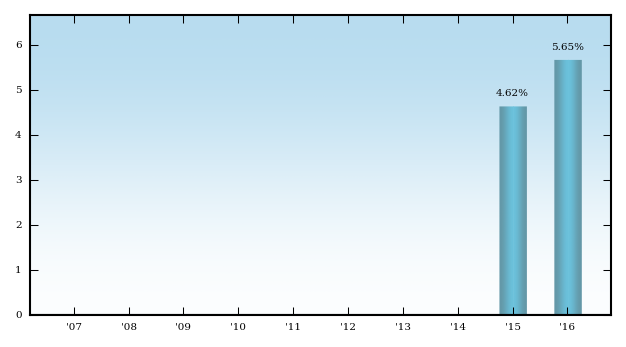| Voya Target In-Retirement Fund | |||||||||||||||||||||||||||||||||||||
| Voya Target In-Retirement Fund (formerly, Voya In-Retirement Fund) | |||||||||||||||||||||||||||||||||||||
| INVESTMENT OBJECTIVE | |||||||||||||||||||||||||||||||||||||
| The Fund seeks to provide a combination of total return and stability of principal consistent with an asset allocation targeted to retirement. | |||||||||||||||||||||||||||||||||||||
| FEES AND EXPENSES OF THE FUND | |||||||||||||||||||||||||||||||||||||
| These tables describe the fees and expenses that you may pay if you buy and hold shares of the Fund. You may qualify for sales charge discounts if you invest at least $250,000 in Voya mutual funds. More information about these and other discounts is available from your financial professional and in the discussion in the Sales Charges section of the Prospectus (page 121) or the Purchase, Exchange, and Redemption of Shares section of the Statement of Additional Information (page 106). | |||||||||||||||||||||||||||||||||||||
| Shareholder Fees Fees paid directly from your investment | |||||||||||||||||||||||||||||||||||||
| |||||||||||||||||||||||||||||||||||||
| Annual Fund Operating Expenses Expenses you pay each year as a % of the value of your investment | |||||||||||||||||||||||||||||||||||||
| |||||||||||||||||||||||||||||||||||||
| Expense Example | |||||||||||||||||||||||||||||||||||||
| The Example is intended to help you compare the cost of investing in shares of the Fund with the costs of investing in other mutual funds. The Example assumes that you invest $10,000 in the Fund for the time periods indicated. The Example shows costs if you sold (redeemed) your shares at the end of the period or continued to hold them. The Example also assumes that your investment had a 5% return each year and that the Fund's operating expenses remain the same. Although your actual costs may be higher or lower, based on these assumptions your costs would be: | |||||||||||||||||||||||||||||||||||||
| |||||||||||||||||||||||||||||||||||||
| |||||||||||||||||||||||||||||||||||||
| The Example reflects applicable expense limitation agreements and/or waivers in effect, if any, for the one-year period and the first year of the three-, five-, and ten-year periods. | |||||||||||||||||||||||||||||||||||||
| Portfolio Turnover | |||||||||||||||||||||||||||||||||||||
| The Fund pays transaction costs, such as commissions, when it buys and sells securities (or “turns over” its portfolio). A higher portfolio turnover rate may indicate higher transaction costs and may mean higher taxes if you are investing in a taxable account. These costs, which are not reflected in Annual Fund Operating Expenses or in the Expense Example, affect the Fund's performance. During the most recent fiscal year, the Fund's portfolio turnover rate was 44% of the average value of its portfolio. | |||||||||||||||||||||||||||||||||||||
| PRINCIPAL INVESTMENT STRATEGIES | |||||||||||||||||||||||||||||||||||||
| The Fund invests primarily in a combination of Underlying Funds, which are actively managed funds or passively managed funds (index funds). The Underlying Funds may or may not be affiliated with the investment adviser. The Underlying Funds invest in U.S. stocks, international stocks, U.S. bonds, and other debt instruments and the Fund uses an asset allocation strategy designed for investors expecting to retire soon or are already retired. The Fund's current approximate target investment allocation (expressed as a percentage of its net assets) (“Target Allocation”) among the Underlying Funds is: 35% in equity securities and 65% in debt instruments. As this is the Target Allocation, the actual allocation of the Fund's assets may deviate from the percentages shown. The Target Allocation is measured with reference to the primary investment strategies of the Underlying Funds; actual exposure to equity securities and debt instruments will vary from the Target Allocation if an Underlying Fund is not substantially invested in accordance with its primary investment strategy. The Fund may periodically deviate from the Target Allocation based on an assessment of the current market conditions or other factors. Generally, the deviations fall within the range of +/- 10% relative to the current Target Allocation. The sub-adviser (“Sub-Adviser”) may determine, in light of market conditions or other factors, to deviate by a wider margin in order to protect the Fund, to achieve its investment objective, or to take advantage of particular opportunities. The Underlying Funds provide exposure to a wide range of traditional asset classes which include stocks, bonds, and cash and non-traditional asset classes (also known as alternative strategies) which include, but are not limited to, real estate, commodities, and floating rate loans. Equity securities in which the Underlying Funds invest include, but are not limited to, domestic and international large-, mid-, and small-capitalization stocks (may be growth oriented, value oriented, or a blend); emerging market securities; domestic and international real estate stocks, including real estate investment trusts; and natural resource/commodity securities. Debt instruments in which the Underlying Funds invest include, but are not limited to, domestic and international (including emerging markets) intermediate, long-term and short-term bonds; high-yield bonds commonly referred to as “junk bonds; ” floating rate loans; and Treasury inflation protected securities. The Fund may invest in exchange-traded notes. The Fund may also invest in derivatives, including futures and swaps (including interest rate swaps, total return swaps, and credit default swaps), to make tactical asset allocations, as a substitute for taking a position in the underlying asset, to seek to minimize risk, and to assist in managing cash. The Fund may invest up to 50% of its total assets in Underlying Funds not affiliated with the investment adviser, including exchange-traded funds. The Fund will be rebalanced periodically to return to the Target Allocation. The Target Allocation may be changed at any time by the Sub-Adviser. | |||||||||||||||||||||||||||||||||||||
| PRINCIPAL RISKS | |||||||||||||||||||||||||||||||||||||
| You could lose money on an investment in the Fund. There is no guarantee that the Fund will provide adequate income at and through your retirement or for any of your financial goals. The value of your investment in the Fund changes with the values of the Underlying Funds and their investments. The Fund is subject to the following principal risks (either directly or through investments in one or more Underlying Funds). Any of these risks, among others, could affect the Fund's or an Underlying Fund's performance or cause the Fund or an Underlying Fund to lose money or to underperform market averages of other funds. Asset Allocation: Investment performance depends on the manager’s skill in allocating assets among Underlying Funds and asset classes based on judgments by the manager. There is a risk that the manager may allocate assets to an Underlying Fund or asset class that underperforms compared to other Underlying Funds or asset classes. Bank Instruments: Bank instruments include certificates of deposit, fixed time deposits, bankers’ acceptances, and other debt and deposit-type obligations issued by banks. Changes in economic, regulatory or political conditions, or other events that affect the banking industry may have an adverse effect on bank instruments or banking institutions that serve as counterparties in transactions with the Fund. Commodities: Commodity prices can have significant volatility, and exposure to commodities can cause the net asset value of the Fund’s shares to decline or fluctuate in a rapid and unpredictable manner. A liquid secondary market may not exist for certain commodity investments, which may make it difficult for the Fund to sell them at a desirable price or at the price at which it is carrying them. Company: The price of a company’s stock could decline or underperform for many reasons including, among others, poor management, financial problems, reduced demand for company goods or services, regulatory fines and judgments, or business challenges. If a company declares bankruptcy or becomes insolvent, its stock could become worthless. Credit: The price of a bond or other debt instrument is likely to fall if the issuer’s actual or perceived financial health deteriorates, whether because of broad economic or issuer-specific reasons. In certain cases, the issuer could be late in paying interest or principal, or could fail to pay its financial obligations altogether. Credit Default Swaps: The Fund may enter into credit default swaps, either as a buyer or a seller of the swap. A buyer of a swap pays a fee to buy protection against the risk that a security will default. If no default occurs, the Fund will have paid the fee, but typically will recover nothing under the swap. A seller of a swap receives payment(s) in return for an obligation to pay the counterparty the full notional value of a security in the event of a default of the security issuer. As a seller of a swap, the Fund would effectively add leverage to its portfolio because, in addition to its total net assets, the Fund would be subject to investment exposure on the full notional value of the swap. Credit default swaps are particularly subject to counterparty, credit, valuation, liquidity and leveraging risks and the risk that the swap may not correlate as expected. Certain standardized swaps are subject to mandatory central clearing. Central clearing is expected to reduce counterparty credit risk and increase liquidity; however, there is no assurance that they will achieve that result, and in the meantime, central clearing and related requirements expose the Fund to new kinds of costs and risks. In addition, credit default swaps expose the Fund to the risk of improper valuation. Currency: To the extent that the Fund invests directly or indirectly in foreign (non-U.S.) currencies or in securities denominated in, or that trade in, foreign (non-U.S.) currencies, it is subject to the risk that those foreign (non-U.S.) currencies will decline in value relative to the U.S. dollar or, in the case of hedging positions, that the U.S. dollar will decline in value relative to the currency being hedged by the Fund through foreign currency exchange transactions. Deflation: Deflation occurs when prices throughout the economy decline over time - the opposite of inflation. When there is deflation, the principal and income of an inflation-protected bond will decline and could result in losses. Derivative Instruments: Derivative instruments are subject to a number of risks, including the risk of changes in the market price of the underlying securities, credit risk with respect to the counterparty, risk of loss due to changes in market interest rates and liquidity and volatility risk. The amounts required to purchase certain derivatives may be small relative to the magnitude of exposure assumed by the Fund. Therefore, the purchase of certain derivatives may have an economic leveraging effect on the Fund and exaggerate any increase or decrease in the net asset value. Derivatives may not perform as expected, so the Fund may not realize the intended benefits. When used for hedging purposes, the change in value of a derivative may not correlate as expected with the currency, security or other risk being hedged. When used as an alternative or substitute for direct cash investments, the return provided by the derivative may not provide the same return as direct cash investment. In addition, given their complexity, derivatives expose the Fund to the risk of improper valuation. Floating Rate Loans: In the event a borrower fails to pay scheduled interest or principal payments on a floating rate loan, the Fund will experience a reduction in its income and a decline in the market value of such investment. This will likely reduce the amount of dividends paid and may lead to a decline in the net asset value. If a floating rate loan is held by the Fund through another financial institution, or the Fund relies upon another financial institution to administer the loan, the receipt of scheduled interest or principal payments may be subject to the credit risk of such financial institution. Investors in floating rate loans may not be afforded the protections of the anti-fraud provisions of the Securities Act of 1933, as amended, and the Securities Exchange Act of 1934, as amended, because loans may not be considered “securities” under such laws. Additionally, the value of collateral, if any, securing a floating rate loan can decline or may be insufficient to meet the issuer’s obligations under the loan. Furthermore, such collateral may be difficult to liquidate. No active trading market may exist for many floating rate loans and many floating rate loans are subject to restrictions on resale. Transactions in loans typically settle on a delayed basis and may take longer than 7 days to settle. As a result, the Fund may not receive the proceeds from a sale of a floating rate loan for a significant period of time, which may affect the Fund’s ability to repay debt, to fund redemptions, to pay dividends, to pay expenses, or to take advantage of new investment opportunities. Foreign Investments/Developing and Emerging Markets: Investing in foreign (non-U.S.) securities may result in the Fund experiencing more rapid and extreme changes in value than a fund that invests exclusively in securities of U.S. companies due to: smaller markets; differing reporting, accounting, and auditing standards; nationalization, expropriation, or confiscatory taxation; foreign currency fluctuations, currency blockage, or replacement; potential for default on sovereign debt; or political changes or diplomatic developments, which may include the imposition of economic sanctions or other measures by the United States or other governments and supranational organizations. Markets and economies throughout the world are becoming increasingly interconnected, and conditions or events in one market, country or region may adversely impact investments or issuers in another market, country or region. Foreign investment risks may be greater in developing and emerging markets than in developed markets. Growth Investing: Prices of growth stocks are more sensitive to investor perceptions of the issuing company’s growth potential and may fall quickly and significantly if investors suspect that actual growth may be less than expected. There is a risk that funds that invest in growth-oriented stocks may underperform other funds that invest more broadly. Growth stocks tend to be more volatile than value stocks, and may underperform the market as a whole over any given time period. High-Yield Securities: Lower quality securities (including securities that have fallen below investment-grade and are classified as “junk bonds” or “high yield securities”) have greater credit risk and liquidity risk than higher quality (investment-grade) securities, and their issuers' long-term ability to make payments is considered speculative. Prices of lower quality bonds or other debt instruments are also more volatile, are more sensitive to negative news about the economy or the issuer, and have greater liquidity and price volatility risk. Index Strategy: An Underlying Fund that seeks to track the index’s performance and does not use defensive strategies or attempt to reduce its exposure to poor performing securities in the index may underperform the overall market. To the extent an Underlying Fund’s investments track its target index, such Underlying Fund may underperform other funds that invest more broadly. The correlation between an Underlying Fund’s performance and index performance may be affected by an Underlying Fund’s expenses and the timing of purchases and redemptions of an Underlying Fund’s shares. In addition, an Underlying Fund’s actual holdings might not match the index and an Underlying Fund’s effective exposure to index securities at any given time may not precisely correlate. Inflation-Indexed Bonds: If the index measuring inflation falls, the principal value of inflation-indexed bonds will be adjusted downward, and consequently the interest payable on these securities (calculated with respect to a smaller principal amount) will be reduced. In addition, inflation-indexed bonds are subject to the usual risks associated with debt instruments, such as interest rate and credit risk. Repayment of the original bond principal upon maturity (as adjusted for inflation) is guaranteed in the case of U.S. Treasury inflation-indexed bonds. For bonds that do not provide a similar guarantee, the adjusted principal value of the bond repaid at maturity may be less than the original principal. Interest Rate: With bonds and other fixed rate debt instruments, a rise in market interest rates generally causes values to fall; conversely, values generally rise as market interest rates fall. The higher the credit quality of the instrument, and the longer its maturity or duration, the more sensitive it is likely to be to interest rate risk. In the case of inverse securities, the interest rate paid by the securities is a floating rate, which generally will decrease when the market rate of interest to which the inverse security is indexed increases and will increase when the market rate of interest to which the inverse security is indexed decreases. As of the date of this Prospectus, market interest rates in the United States are at or near historic lows, which may increase the Fund’s exposure to risks associated with rising market interest rates. Rising market interest rates could have unpredictable effects on the markets and may expose fixed-income and related markets to heightened volatility. For funds that invest in fixed-income securities, an increase in market interest rates may lead to increased redemptions and increased portfolio turnover, which could reduce liquidity for certain investments, adversely affect values, and increase costs. Increased redemptions may cause the Fund to liquidate portfolio positions when it may not be advantageous to do so and may lower returns. If dealer capacity in fixed-income markets is insufficient for market conditions, it may further inhibit liquidity and increase volatility in the fixed-income markets. Further, recent and potential future changes in government policy may affect interest rates. Liquidity: If a security is illiquid, the Fund might be unable to sell the security at a time when the Fund’s manager might wish to sell, or at all. Further, the lack of an established secondary market may make it more difficult to value illiquid securities, exposing the Fund to the risk that the price at which it sells illiquid securities will be less than the price at which they were valued when held by the Fund. The prices of illiquid securities may be more volatile than more liquid investments. The risks associated with illiquid securities may be greater in times of financial stress. The Fund could lose money if it cannot sell a security at the time and price that would be most beneficial to the Fund. Market: Stock prices may be volatile or have reduced liquidity in response to real or perceived impacts of factors including, but not limited to, economic conditions, changes in market interest rates, and political events. Stock markets tend to be cyclical, with periods when stock prices generally rise and periods when stock prices generally decline. Any given stock market segment may remain out of favor with investors for a short or long period of time, and stocks as an asset class may underperform bonds or other asset classes during some periods. Additionally, legislative, regulatory or tax policies or developments in these areas may adversely impact the investment techniques available to a manager, add to costs and impair the ability of the Fund to achieve its investment objectives. Market Capitalization: Stocks fall into three broad market capitalization categories - large, mid, and small. Investing primarily in one category carries the risk that, due to current market conditions, that category may be out of favor with investors. If valuations of large-capitalization companies appear to be greatly out of proportion to the valuations of mid- or small-capitalization companies, investors may migrate to the stocks of mid- and small-sized companies causing a fund that invests in these companies to increase in value more rapidly than a fund that invests in larger companies. Investing in mid- and small-capitalization companies may be subject to special risks associated with narrower product lines, more limited financial resources, smaller management groups, more limited publicly available information, and a more limited trading market for their stocks as compared with larger companies. As a result, stocks of mid- and small-capitalization companies may be more volatile and may decline significantly in market downturns. Natural Resources/Commodity Securities: The operations and financial performance of companies in natural resources industries may be directly affected by commodity prices. This risk is exacerbated for those natural resources companies that own the underlying commodity. Other Investment Companies: The main risk of investing in other investment companies, including exchange-traded funds (“ETFs”), is the risk that the value of the securities underlying an investment company might decrease. Shares of investment companies that are listed on an exchange may trade at a discount or premium from their net asset value. You will pay a proportionate share of the expenses of those other investment companies (including management fees, administration fees, and custodial fees) in addition to the expenses of the Fund. The investment policies of the other investment companies may not be the same as those of the Fund; as a result, an investment in the other investment companies may be subject to additional or different risks than those to which the Fund is typically subject. Prepayment and Extension: Many types of debt instruments are subject to prepayment and extension risk. Prepayment risk is the risk that the issuer of a debt instrument will pay back the principal earlier than expected. This may occur when interest rates decline. Prepayment may expose the Fund to a lower rate of return upon reinvestment of principal. Also, if a debt instrument subject to prepayment has been purchased at a premium, the value of the premium would be lost in the event of prepayment. Extension risk is the risk that the issuer of a debt instrument will pay back the principal later than expected. This may occur when interest rates rise. This may negatively affect performance, as the value of the debt instrument decreases when principal payments are made later than expected. Additionally, the Fund may be prevented from investing proceeds it would have received at a given time at the higher prevailing interest rates. Real Estate Companies and Real Estate Investment Trusts (“REITs”): Investing in real estate companies and REITs may subject the Fund to risks similar to those associated with the direct ownership of real estate, including losses from casualty or condemnation, changes in local and general economic conditions, supply and demand, market interest rates, zoning laws, regulatory limitations on rents, property taxes, and operating expenses in addition to terrorist attacks, war, or other acts that destroy real property. Investments in REITs are affected by the management skill and creditworthiness of the REIT. The Fund will indirectly bear its proportionate share of expenses, including management fees, paid by each REIT in which it invests. Value Investing: Securities that appear to be undervalued may never appreciate to the extent expected. Further, because the prices of value-oriented securities tend to correlate more closely with economic cycles than growth-oriented securities, they generally are more sensitive to changing economic conditions, such as changes in market interest rates, corporate earnings and industrial production. The manager may be wrong in its assessment of a company’s value and the securities the Fund holds may not reach their full values. A particular risk of the Fund’s value approach is that some holdings may not recover and provide the capital growth anticipated or a security judged to be undervalued may actually be appropriately priced. The market may not favor value-oriented securities and may not favor equities at all. During those periods, the Fund’s relative performance may suffer. There is a risk that funds that invest in value-oriented stocks may underperform other funds that invest more broadly. An investment in the Fund is not a bank deposit and is not insured or guaranteed by the Federal Deposit Insurance Corporation, the Federal Reserve Board or any other government agency. | |||||||||||||||||||||||||||||||||||||
| PERFORMANCE INFORMATION | |||||||||||||||||||||||||||||||||||||
| The following information is intended to help you understand the risks of investing in the Fund. Because Class T shares of the Fund had not commenced operations as of the calendar year ended December 31, 2016, the following bar chart shows the changes in the Fund's Class I shares' performance from year to year, and the table compares the Fund's Class I shares' performance to the performance of a broad-based securities market index/indices for the same period. Class T shares and Class I shares of the Fund would have substantially similar performance because they invest in the same portfolio of securities. However, Class T shares' performance would be lower than Class I shares' performance because of the lower expenses paid by Class I shares. The Fund's performance information reflects applicable fee waivers and/or expense limitations in effect during the period presented. Absent such fee waivers/expense limitations, if any, performance would have been lower. Sales charges are not reflected in the bar chart. If they were, returns would be less than those shown. However, the table includes all applicable fees and sales charges. The Fund's past performance (before and after taxes) is no guarantee of future results. For the most recent performance figures, go to www.voyainvestments.com/literature or call 1-800-992-0180. | |||||||||||||||||||||||||||||||||||||
| Calendar Year Total Returns Class I (as of December 31 of each year) | |||||||||||||||||||||||||||||||||||||

| |||||||||||||||||||||||||||||||||||||
| Best quarter: 4th 2013, 3.27% and Worst quarter: 3rd 2015, -2.52% The Fund's Class I shares' year-to-date total return as of March 31, 2017: 2.67% | |||||||||||||||||||||||||||||||||||||
| Average Annual Total Returns % (for the periods ended December 31, 2016) | |||||||||||||||||||||||||||||||||||||
| |||||||||||||||||||||||||||||||||||||
| After-tax returns are calculated using the historical highest individual federal marginal income tax rates and do not reflect the impact of state and local taxes. Actual after-tax returns depend on an investor's tax situation and may differ from those shown, and the after-tax returns shown are not relevant to investors who hold their Fund shares through tax advantaged arrangements such as 401(k) plans or individual retirement accounts. In some cases the after-tax returns may exceed the return before taxes due to an assumed tax benefit from any losses on a sale of Fund shares at the end of the measurement period. After-tax returns are shown for Class I shares only. After-tax returns for other classes will vary. | |||||||||||||||||||||||||||||||||||||
